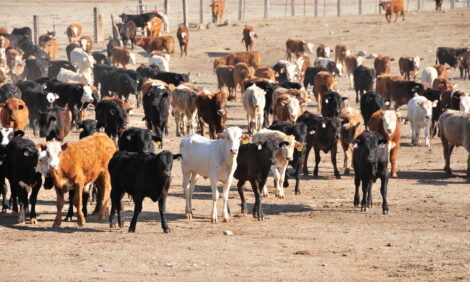



EFSA Report Analyses Dairy Welfare
EU - EFSA’s Panel on Animal Health and Welfare (AHAW) has published five scientific opinions and a scientific report on the overall effects of the most relevant farming systems on the welfare of dairy cows and related diseases.The Panel concluded that long term genetic selection for higher milk yield and the nature of the farming systems used – i.e. housing and equipment, as well as management and handling practices – are major factors affecting the health and welfare of dairy cows.
Lameness and mastitis are the most significant indicators of poor dairy cow welfare, as well as reproductive, metabolic and behavioural disorders. The Panel proposed a series of recommendations which could be taken into account by risk managers in view of further improving welfare in the areas of housing, feeding and the genetic selection of dairy cows.
On request of the European Commission, the AHAW Panel considered, in its first opinions in the area of dairy cow welfare whether current farming and husbandry systems meet the welfare needs of dairy cows. The Panel also evaluated the impact of genetic selection aimed at increasing milk yield on dairy cow welfare in the various farming systems used[1] , and highlighted the correlation between genetic selection and the incidence of lameness, mastitis, reproductive and metabolic disorders.
Over the last thirty years genetic selection for higher milk yield has changed the body shape and increased the size of dairy cows, therefore increasing their requirement for space. Scientific experts highlighted the importance of allocating enough space for cattle movement when designing resting, feeding and walking areas. The Panel recommended that the genetic selection of dairy cows should address their resistance to diseases such as lameness and mastitis, as well as improve their fertility, health and longevity.
Scientific experts took into account all available data in defining levels for light, indoor temperature and relative humidity for good welfare. They recommended that the design of resting, walking and feeding areas in the buildings should allow for sufficient movement and exercise. The Panel also said that while the use of tie-stalls continues, cows should have daily exercise that involves walking freely. On this point, six members of the AHAW Panel expressed a minority opinion highlighting evidence of poor welfare in dairy cattle held in tie-stalls and recommended that dairy cattle should not be routinely kept in tie-stalls
The Panel concluded that achieving reduction of mastitis can be obtained not only from treating the disease and preventing its transmission, but also from improving the animals’ immune systems. This can be achieved by minimising stress factors and through controlled and nutritionally-balanced feeding (e.g. by providing the most appropriate type of dietary fibre for the digestive system of dairy cows).
The Panel also concluded that farms with a high prevalence of lameness in dairy cows (e.g. above 10%) do not have an adequate prevention programme and should improve housing conditions, genetic selection and management practices. Moreover, farmers who are well trained in recognising signs of disease at an early stage and in knowing when to seek veterinary advice can contribute to reducing the prevalence of lameness.
The full text of the five scientific opinions and the scientific report are available on the EFSA website.
Further Reading
| - | You can view the full report by clicking here. |
TheCattleSite News Desk


